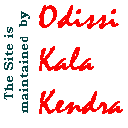|
|
|
 |
Power of Dance |
|||
|
Dance is one of the
most powerful forms of human expression, and therefore it
is a powerful means of communication. Through movements
of the human body, dance conveys the whole range of human
emotions; tells stories; and strengthens, disciplines,
and refreshes the whole person. For many of the world's
people, dance also has the power to heal, to provide
salvation, and to invoke and appease deities. The dance was man's natural way of attuning himself to the powers of the cosmos. Rhythmic movement provided the key for both creating and reiterating the dream-like forms, and was thus a means of being in touch with the source of life. The two major elements that make dance uniquely powerful are its full use of the person and its ability to serve societies in many important ways. Any definition of dance should incorporate both its physical and social/cultural functions. The human body is unique in its ability to choose to move freely in a way that has meaning and in its ability to give meaning to whatever movement it creates. Other art forms, such as painting, sculpture, and poetry, are at least one step removed from immediate experience. In painting, for example, the canvas is the medium. In dance, however, the body is the direct medium; it needs no intermediary. In dance the physical, emotional, intellectual, and spiritual powers of the body are evident in a single act. Dance, as exemplified in religious worship, displays of power, rites of passage, courtship or dating, celebrations and entertainment, is a primary form of communication in most societies. Dance is inherently social, and it reflects a society's views about lifeideas about the body, relationships between men and women, relationships among age groups and classes, relationships to deities, and so on. Between cultures, dance can be an important means of mutual understanding once cultural biases have been set aside. Dance has the power both to conserve and expand culture, keeping a society's traditions alive while adapting to new realities. In this way dance sustains the integrity of culture in a turbulent world of high-speed, high-impact change. Through the traditional Bhangra, a farmers' dance from the Punjab area of India, for example, Punjabis living in England are able to keep their Punjab identity and culture alive. Human movement that can be called dance is extremely varied from simple hand gestures to complex ballets, to masses of people swaying in rhythm at a rock concert or at a religious service. There is no shortage of definitions, but few, if any, manage to convey the feelings of a person who has been seized by the power of dance and has transcended the limits of his or her own body and entered a state of ecstasy. Dance is a transient mode of moving through space. Dance occurs through purposefully selected and controlled rhythmic movements; the resulting phenomenon is recognized as dance both by the performer and the observing members of a given group.2 The Power of Dance, Program 1 of DANCING, examines the function and impact of dance in the lives of individuals and societies. |
|||